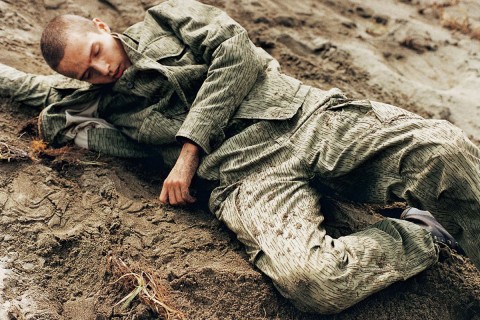Only a few years ago, Japanese fashion was one of the best kept secrets in menswear. Clearly that’s no longer the case.
Of course, brands like COMME des GARÇONS, A Bathing Ape and UNDERCOVER have been fashion heavyweights for a long time, but it’s only in the past few years that the global fashion audience has begun to learn about the wealth of Japanese clothing brands that have been pushing the envelope of style and creating amazing, high-quality product just out of sight of the masses.
With that in mind, here’s a guide to some of the best Japanese clothing brands that all Highsnobiety readers should know about. For the already familiar, it’s a chance to reflect on the best of the best. For those less informed, the door’s about to open to a whole other level of style.
NEIGHBORHOOD
Neighborhood
Started in 1994 by Shinsuke Takizawa (often referred to as Shin), NEIGHBORHOOD or NBHD is one of the OGs of Japanese streetwear. NEIGHBORHOOD was part of the original Harajuku streetwear scene of the early ’90s, a Tokyo-based movement of friends and peers who effectively founded the Japanese streetwear scene, birthing labels including BAPE, UNDERCOVER, WTAPS, Hysteric Glamour and GOODENOUGH.
NEIGHBORHOOD draws from Takizawa’s deep passion for historic motorcycle subculture, creating classic American clothing such as leathers, shirting, sweats, flannels and headwear, all with a distinct biker gang twist.
Though recent collections have seen NEIGHBORHOOD expand into military, prep, Native American and even early-20th century industrial workwear styles, the brand is still best known for its authentic selvedge denim, manufactured to strict traditional specifications and customized with intricate, natural distress washes that range from classic indigo fades to their iconic “Savage” series.
WTAPS
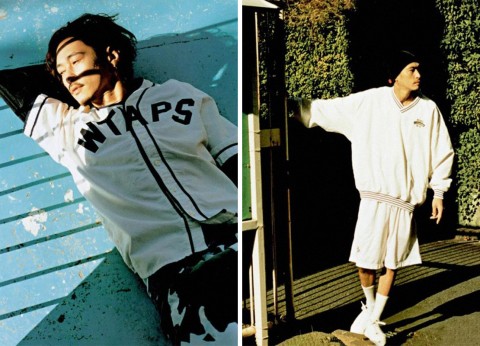
Grind Mag
Tetsu Nishiyama, aka TET, was a protégé of Shin in the early ’90s when he started FPAR, a T-shirt brand inspired by the DIY aesthetic of punk and anarchic movements. In 1996 he started WTAPS, pronounced double-taps, taken from the military term for two shots at the same target in quick succession.
As the name suggests, WTAPS is a Japanese brand inspired by authentic military designs, infusing this with streetwear sensibilities and contemporary perspectives to create some of the most sought-after pieces in Japanese streetwear. In Japan, WTAPS is as notorious as Supreme for long lines on release days and rapid sell-out product.
Their Jungle Stock cargo pants and M-65 jackets sit alongside Supreme’s box logo hoodies and BAPE camouflage in streetwear royalty, and are essential to any wardrobe — if you somehow manage to get hold of them.
UNDERCOVER
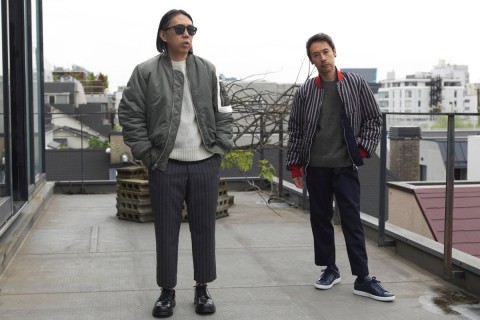
Undercover
Jun Takahashi’s UNDERCOVER is probably the epitome of Japanese streetwear. For nearly 30 years, the designer’s distinct visual perspective has been influencing design to where contemporary fashion stands today, and early UNDERCOVER designs are now some of the most coveted and sought-after pieces for collectors.
The aesthetic of this Japanese brand is best explained by its own motto: “We make noise, not clothes.” UNDERCOVER is about disruption, subversion and rebellion, blending pop culture iconography with punk, bondage, goth and post-modern aesthetics to create the quintessential “punk” streetwear brand.
Wacko Maria
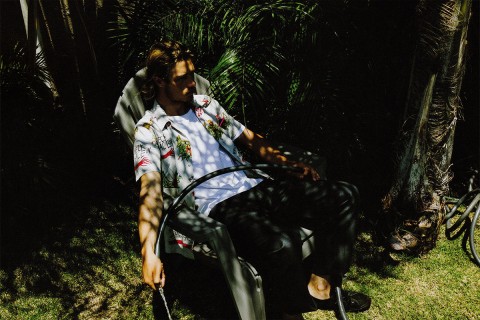
Grind Mag
With perhaps the most fascinating backstory of all, Wacko Maria was founded by Nobuhiro Mori and Keiji Ishizuka, two J-league professional footballers. Starting out as the Rock Steady bar in Tokyo, the venture eventually evolved into Wacko Maria, a Japanese menswear brand inspired by Latin American style and rockabilly subcultures.
Known for their ornate shirting and outerwear with elaborate embroidered details, and combining traditional artwork such as religious iconography and classic Americana with oversized slogans, the brand has carved out a niche for larger-than-life clothing with an addictively absurd twist, making it a favored brand of style pioneers like Aaron Bondaroff of Know Wave.
This season the brand created a capsule collection with notorious graffiti artist Neck Face, finding a perfect partner to their unique approach to the no-holds-barred psychobilly aesthetic.
NUMBER (N)INE
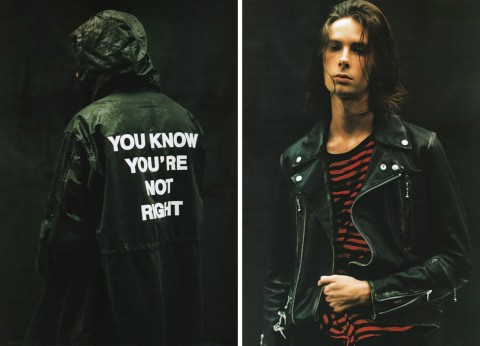
Grind Mag
Not unlike Takahashi’s work with UNDERCOVER, Takahiro Miyashita’s NUMBER (N)INE was an impassioned exploration of Americana and music — specifically rock & roll. The Japanese fashion label’s name comes from the song “Revolution 9,” the 8-minute avant-garde song from The Beatles’ iconic White Album, and though the brand’s styles varied wildly from season to season, every piece was unified by an underlying essence of rock & roll style.
Like many of his contemporaries, Miyashita’s designs demonstrate sheer mastery of texture, layering and the power of clothing as an expression of culture. Looking at collections, it’s possible to identify the influence of countless iconic bands, from the golden era of Pink Floyd, Led Zeppelin and Deep Purple to the later years of post-punk and grunge like Nirvana, Jesus & Mary Chain and Daniel Johnston.
The Japanese brand caused great shock when it announced it would be closing in 2009, but fortunately fans didn’t have to wait long for Miyashita’s next project…
TAKAHIROMIYASHITATheSoloist

The Soloist
Launched in 2010, TAKAHIROMIYASHITATheSoloist (often abbreviated to The Soloist) is a pure continuation of Miyashita’s previous work, though some argue the name suggests an even stronger focus on the designer’s own personal perspectives. The designer’s distinct style is present as ever, though arguably with a slightly more refined, matured touch than NUMBER (N)INE.
Collections have taken inspiration from cultural phenomenons such as Oasis, David Bowie and Country & Western, bringing Miyashita’s impeccable eye for evolution and elevation to each subject.
visvim
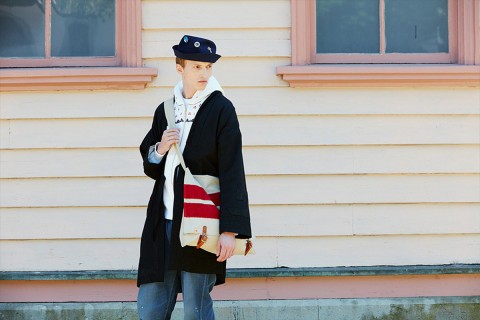
Visvim
Perhaps one of the most famous contemporary Japanese clothing brands of all, visvim was started in 2000 by Hiroki Nakamura after leaving his position as a designer at Burton Snowboards. Inspired in equal parts by the technical elements of his previous position and the traditional crafts of different cultures that he learned about traveling the world, Nakamura founded Cubism Inc., whose “Free International Laboratory” or F.I.L. endeavors to blend natural, traditional techniques with pioneering contemporary perspectives to create the pinnacle expression of classic clothing.
Dyes made from indigo, mud and cochineal beetles are applied to textiles as intricate as linen/hemp/silk/angora blends, then treated with modern technologies such as Gore-Tex to find the perfect balance between the functionality of modern manufacturing and the timeless appeal of traditional techniques.
The most famous expression of this technique is Nakamura’s reconfiguration of Native American moccasin, the FBT, a shoe that blends natural leather construction and ornate tassel details with a durable Vibram® outsole and has grown to be one of the most coveted footwear designs of the 21st century.
Head Porter
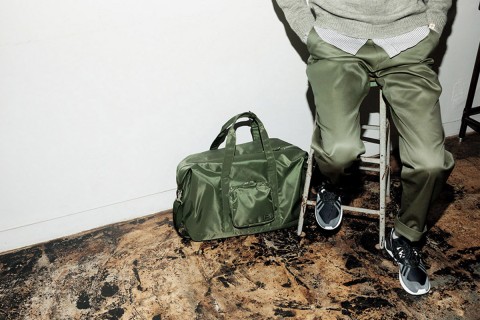
Head Porter
One of many Japanese clothing brands created by the godfather of Japanese streetwear, Hiroshi Fujiwara, Head Porter creates luggage and accessories such as wallets, totes and handbags, signified by the brand’s signature woven label in the lower-right corner.
Though Head Porter is arguably best known for its black nylon products with bright orange lining, the brand’s unparalleled popularity in Japan and beyond has seen the line expand to include seasonal designs in a range of colors and patterns, and when it then comes to brands looking for a luggage collaboration, there’s only one option: Head Porter.
In fact, it’s probably easier to list the brands Head Porter hasn’t collaborated with, but notable previous projects include A Bathing Ape, Supreme, Norse Projects and COMME des GARÇONS.
mastermind JAPAN
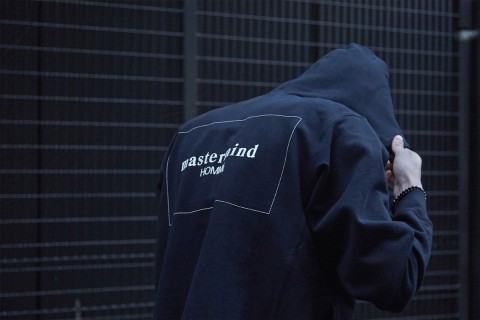
Mastermind
First founded by designer Masaaki Honma in 1997, mastermind JAPAN (often shortened to mastermind or just MMJ) is a case study in timeless cool from a Japanese perspective. At its core, mastermind is characterized by two raw ingredients: the color black, and its iconic Skull & Crossbones logo. While so few elements might sound limited on paper, mastermind demonstrates how far you can push the envelope, and in doing so has created one of the most iconic Japanese clothing brands ever.
Fundamental inspirations come from punk and goth aesthetics, but highly technical production techniques such as form-hugging silhouettes, multiple-layered T-shirts and Swarovski® crystal detailing — combined with the brand’s notoriously close-chested operations from which virtually no information ever leaks — have culminated in a brand that creates the pinnacle of streetwear cool at eye-wateringly high prices.
Karl Lagerfeld, notorious Creative Director of Chanel, once cited mastermind JAPAN as one of his favorite labels, and MMJ is one of very few brands to have collaborated with historic French luggage manufacturer, Maison Goyard. Honma closed the brand’s doors unceremoniously in 2013 after 15 successful years, though the brand has recently resurfaced with modest collections and collaborations with the likes of adidas Originals.
Needles
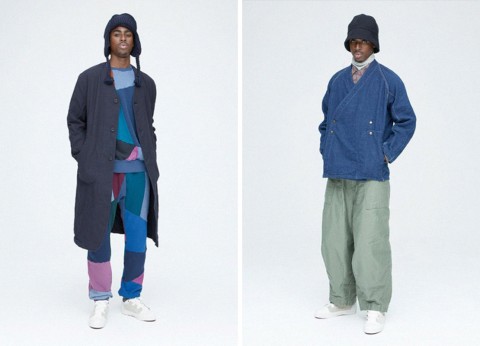
Needles
Born from true passion, like so many of the most revered Japanese brands, Needles is one of many brands that were created as an offshoot of Nepenthes. Nepenthes was founded by friends Daiki Suzuki and Keizo Shimizu, starting out as a menswear store that imported classic American brands with a heavy influence from Ivy League and prep style.
Over time, the business birthed a number of labels including Nepenthes New York, Engineered Garments and Needles. Though each brand is worthy of note in its own right, Needles’ bold reworking of classic American military and casual clothing has cemented the label as a wardrobe essential amongst discerning retailers like Haven, Goodhood and END.
Cav Empt
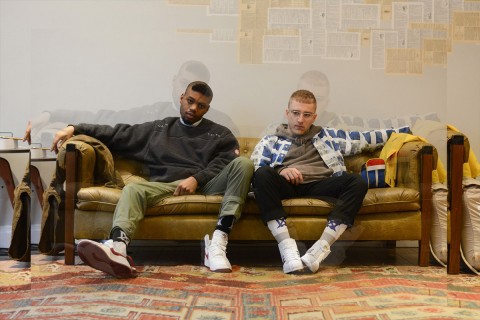
Bodega
The people behind Cav Empt (often shortened to C.E) are a bit like those elusive musicians who write hit songs but never chase fame themselves: though you might not know them, you definitely know their work.
Founders Sk8thing and Toby Feltwell have deep respective histories in the Tokyo fashion and music scenes: Sk8thing is a graphic designer who has created graphics for heavyweight Japanese clothing brands like BAPE, NEIGHBORHOOD, UNDERCOVER, Bounty Hunter and many more, as well as designing the logos and graphics for NIGO® & Pharrell Williams’ Billionaire Boys Club and ICE CREAM lines; British-born Feltwell started out working in the UK music industry running A&R operations at James Lavelle’s iconic Mo’Wax records, subsequently moving to XL when they acquired Lavelle’s label in the early ’00s.
An invitation to Tokyo to provide legal advice to NIGO® led to positions as Operations Director and Creative Consultant for BAPE, BBC and Ice Cream. Following the sale of BAPE to IT, Feltwell reconvened with Sk8thing and productions expert Hishi on a new project helmed by three creatives with no financial direction — “Debt through chaos.”
C.E’s collections are a visual exploration of post-modernism, blending far-flung references like 20th-century Italian horror films, French post-structuralist philosophy, Internet 1.0 iconography and digital archaeology to question the very nature of physicality, permanence, value and truth. Even the brand’s name is an abbreviation of the Latin phrase, “caveat emptor” — or “buyer beware.”
Junya Watanabe
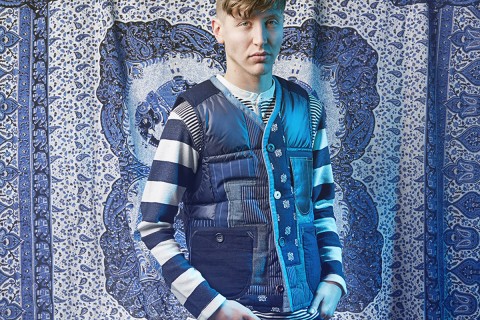
END Clothing
One of the world’s most respected contemporary menswear designers, Japanese or otherwise, Junya Watanabe worked under Rei Kawakubo of Comme des Garçons before launching his own label within the CdG family in the early ’90s. Much like the output of COMME des GARÇONS itself, arguably the originator of Japanese avant-garde, Watanabe plays heavily with cuts, textiles and form to create bold reconfigurations of classic menswear designs.
In recent years the Japanese brand is perhaps best known for its use of multiple fabrics in patchwork designs, such as in its ongoing collaborations with Levis, but at the heart of Watanabe’s work is a fascination with different styles of clothing and how the wearer uses them.
As a result, workwear designs are reimagined with modern cuts and futuristic touches, elaborately-decorated jackets are designed to be just as easily worn inside-out, and classic pieces like suits and overcoats are disrupted with unexpected touches and textures. If Kawakubo’s avant-garde is a disruption of the visual elements of fashion, then Watanabe’s might be argued to disrupt the functional: it’s a denim jacket like any other, but unlike anything you’ve ever seen before.
OriginalFake
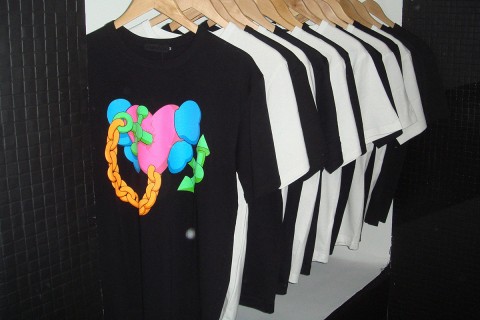
Launched in 2006 in collaboration with the Medicom Toy company, OriginalFake was the official fashion label of KAWS, globally-renowned street artist best known for his skull & cross bones “Companion” character. The Japanese streetwear brand first launched when KAWS, real name Brian Donnelly, was approached by Japanese architecture and interior design firm Wonderwall to design a store. His response? Sure, if it can be my store.
Though OriginalFake was arguably best known for graphic T-shirts featuring KAWS’ distinctive artwork, collections evolved over later seasons to include elaborate cut’n’sew and outerwear pieces, each decorated with subtle references to Donnelly’s work. The result was a brand at the intersection of commercialism and creativity that encapsulated Donnelly’s admiration of pop artists such as Andy Warhol and Claes Oldenburg.
Unfortunately, the brand’s ornate designs came at a high price, meaning little besides T-shirts ever made it out of Japan to Western stockists. In 2013, after seven years of operations, the brand closed down, but KAWS’ explorations in fashion have continued through collaborations with numerous fashion designers, as well as a huge collaboration with Uniqlo earlier this year that sold out at blistering speeds.
A Bathing Ape
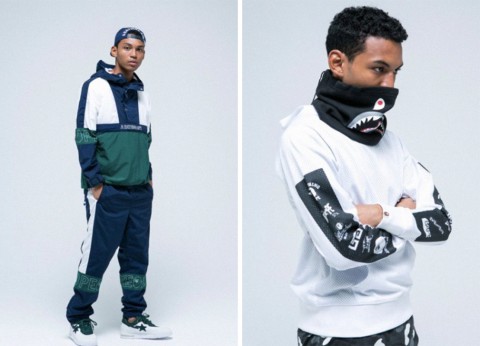
BAPE
If there was one Japanese brand that needs no introduction, it would surely be A Bathing Ape. Founded in 1993 by NIGO®, A Bathing Ape — or BAPE — started out like many of its Harajuku contemporaries, producing graphic T-shirts and sweats, rapidly growing into a lifestyle brand whose output encompassed everything from jeans and jackets to toys and toilet paper.
The brand’s name comes from the Japanese saying, “A bathing ape in lukewarm water,” a phrase describing somebody who is overindulgent — poking fun at some of the brand’s own hyper-consumer customers. In the early ’00s, a number of rappers including Pharrell Williams, Clipse and Soulja Boy exposed BAPE to a mainstream Western audience (though Soulja Boy was notorious for wearing fakes), and the brand’s iconic Bapesta sneakers, shark hoodies and cloud camo outerwear became wardrobe essentials for any streetwear aficionado.
Though NIGO® sold the brand to Hong Kong distributor IT several years ago, the brand’s popularity has continued to thrive, and thanks to brands such as OFF-WHITE, HBA and YEEZY bridging the gap between high-end and street fashion, BAPE’s reputation as the original high-priced, high-statement Japanese brand has made it a coveted purchase for every customer from trend-savvy teenagers to style-blending fashion authorities.
White Moutaineering
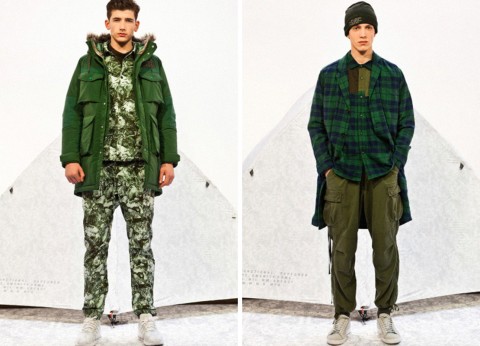
White Mountaineering
Yosuke Aizawa’s White Mountaineering is one of a number of Japanese clothing brands who transformed the power of functional, utilitarian clothing into stunning fashion design. Aizawa worked under Junya Watanabe before launching his own label in 2006, producing arctic and climbing-inspired clothing with beautiful details such as embroidery, jacquard weaves elaborate patterns and unique fabric blends.
Geometric patterns are particularly prominent in Aizawa’s work, spanning knitwear and shirting to the beautiful parquet floor of the brand’s Tokyo flagship store.
In recent seasons the brand has branched out to collaborate with a number of major labels, including British outerwear specialist Barbour, Saucony sneakers and adidas Originals — the latter of whom have received widespread acclaim for their elaborate Pitti Uomo presentations.
Ironically, Aizawa has admitted in interviews that his designs are probably unsuitable for genuine mountaineering, but his fascination with the aesthetic and visual elements of cold-weather climates has nonetheless created some of the most interesting creations in Japanese fashion in recent years.
SOPH.NET
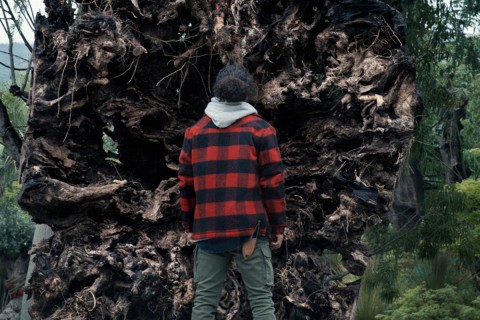
SOPH.NET is the first and best known Japanese brand founded by Hirofumi Kiyonaga. Part-streetwear, part-high fashion, part-functional everyday design, where many of SOPH’s contemporaries are known for their distinct, stylized designs or deep cultural references — such as WTAPS’ military inspirations — Kiyonaga’s brand is much more straightforward, creating clean, stylish, accessible pieces with unique touches that become familiar over time.
The brand has made particular motifs such as camouflage and star patterns an insignia of sorts, regularly implementing them in its designs, while its Scorpion logo can often be found embroidered on shirts, polos and trousers.
The brand’s high-end approach to casual clothing has seen it collaborate with a number of likeminded brands including Stüssy, Carhartt, Vans and even visvim, producing elevated versions of each brand’s most celebrated products. Beyond SOPH, Kiyonaga also co-helms Uniform Experiment with Hiroshi Fujiwara, and also runs the label F.C. Real Bristol, a collaborative range with Nike that creates sports gear for an eponymous fictional soccer team.
NexusVII
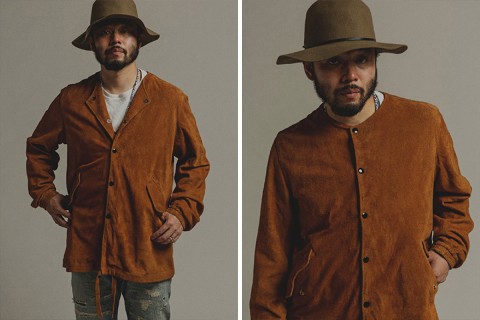
NexusVII
Of all the brands on this list, you’d be forgiven for not knowing NexusVII. For some reason or another, the brand has a comparatively low-profile outside of Japan compared to the likes of BAPE and NEIGHBORHOOD, but it’s one of the most interesting Japanese clothing brands around.
Occupying a space somewhere between rugged military design and functional outdoors clothing, NexusVII applies a cool, calculated eye to classic fashion design, applying an almost scientific geometric touch to its pieces that makes every design look like it could have been designed by algorithm.
Beyond the brand’s mainline, it also produces MADMAXX, a sublabel that specializes in using deadstock and vintage fabrics in its manufacturing, and NEX-WCS, pieces inspired by the U.S. military’s Extended Cold Weather Clothing System (ECWCS), a range of pieces that can be combined and layered together to combat the harshest elements.
It’s also worth noting that the design team behind NexusVII are the same that designed KAWS’ clothing label, OriginalFake, translating their laser-precision aesthetic to the American street artist’s own meticulous visual style.
fragment design

Brainchild of the godfather of Japanese streetwear, Hiroshi Fujiwara, fragment design is but one of a huge roster of labels that leads, one way or another, back to Fujiwara. From launching iconic labels like Goodenough, Head Porter and Uniform Experiment, to playing the H in Nike’s HTM line alongside Tinker Hatfield and Mark Parker, to continuing to reinvent the fashion retail landscape with recent projects The Pool Aoyama and The Parking Ginza.
It’s difficult to choose just one brand that represents Fujiwara’s work, but fragment design is a window into one of Japanese fashion’s most fascinating designers. Distinguished by its unmissable lightning bolt logo, over the years fragment has collaborated with a list of brands as long as your arm, producing subtle elevations of iconic pieces from the likes of Converse, Levis, Oakley, Disney, Starbucks, Stüssy, Casio, visvim…you get the idea.
Often Fujiwara’s adjustments will consist of little more than a material upgrade and a tasteful lightning bolt logo placement, but it is precisely this approach (one that many perceive as lazy or cynical) that makes Fujiwara such a revered designer and tastemaker — a sort of aesthetic Occam’s Razor that understands that often the simplest and most straightforward version of a product is the most effective.
And, though you might not like every piece fragment releases, when they touch on something that’s significant to you, be it a pair of Air Jordans or a Carhartt jacket, the appearance of that lightning bolt logo becomes a mark of that piece’s timeless, untouchable cool.
Medicom Toy
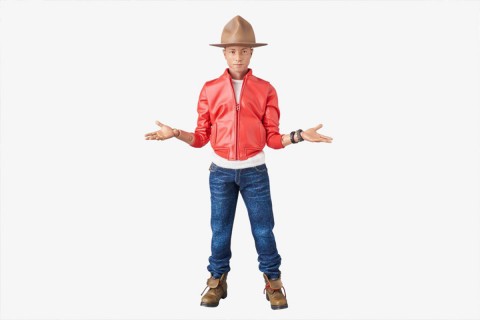
Medicom Toy
Now in its 20th year of operations, the Medicom Toy company is deeply interwoven with Japanese fashion and streetwear, as strange as the crossover of toys and clothes might sound on paper.
Though digital culture has revolutionized the world, Japan remains in many regards a physical culture: purchases are made in cash, as the idea of spending money you don’t have is frowned upon; vinyl, CD and even cassette sales are still strong; and much of the stories of subcultures and tribes that you read about are because fashion in Japan is about going out and being seen.
With this considered, Medicom Toy’s popularity is no mystery. From replica dolls of cultural icons like Andy Warhol and the Sex Pistols, to reproductions of street culture characters such as Futura2000’s Pointman, KAWS’ companion and A Bathing Ape’s Baby Milo, Medicom Toy has built a name for producing physical representations of the culture we all obsess over.
Most notable of this is the brand’s Bearbrick series, adorning a distinctive bear figurine with all manner of graphics and visual artefacts celebrating everything from the Grateful Dead to Star Wars to Daft Punk and beyond. Perfect for any maturing streetwear fan thinking of a move into the homewares department…just check with your partner first.
COMME des GARÇONS
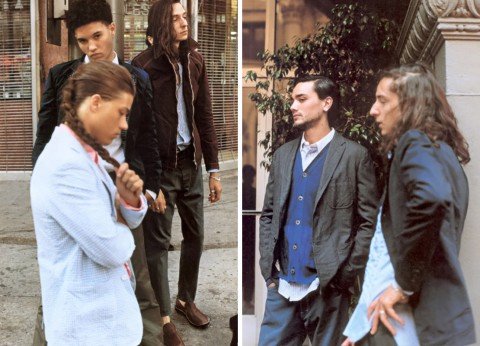
Grind
Truly, no list about Japanese fashion would be complete without a special mention to COMME des GARÇONS. Founded in 1969 by Rei Kawakubo, COMME des GARÇONS grew in popularity in Japan throughout the ’70s before debuting in Paris in 1981. At first, Kawakubo’s collections were dismissed by critics as “ragged chic,” and her avant-garde approach to fashion design continues to attract praise and scorn in equal measures from across the fashion spectrum.
And so it should, because COMME des GARÇONS is inarguably fashion’s avant-garde. The Japanese brand’s modus operandi has always been to turn things on its head — exemplified by Kawakubo’s recent collaboration with Louis Vuitton, where she cut huge holes into a tote bag, defying the bag’s primary function of holding things.
From designs that bloat and transform the natural human form, to perfumes that some have described as smelling of burnt rubber, to Dover Street Market – a department store (first in London, then more recently opening new branches in Ginza and New York) that turns the entire retail experience on its head – the essence of COMME des GARÇONS is disruption of the norm.
And between high-end lines such as CdG Homme and CdG Shirt and diffusion lines like CdG Wallet or the CdG Play line and its inimitable heart logo, COMME des GARÇONS truly offers something for everyone in a way that no other brand has, or perhaps even could.
Yohji Yamamoto
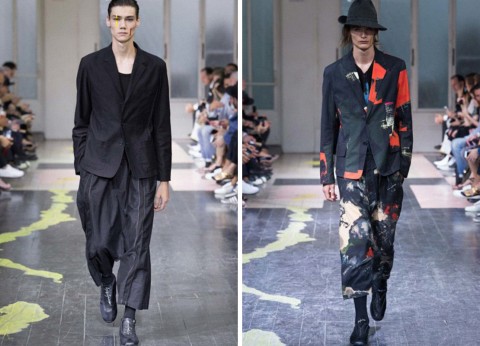
Vogue
Besides Rei Kawakubo, Yohji Yamamoto is arguably the most famous Japanese fashion designer of the 20th century. At its foundation, Yohji Yamamoto’s designs are a cross-pollination of traditional Japanese design with contemporary perspectives, and the Japanese brand has produced consistently stunning pieces throughout its 35-year history.
What makes the label more interesting, however, is the impact Yamamoto’s work has had on broader fashion, when one considers how many of his signature elements have become commonplace, from extended silhouettes and drop-crotch to asymmetric design and draped, layered style. And yet, with all this considered, the only constant of Yamamoto’s work is the color black, a color the designer himself has described as saying, “I don’t bother you — don’t bother me.”
Beyond his own label, Yamamoto has worked with adidas Originals on the hugely successful Y-3 line, birthplace of the Qasa, one of fashion’s most coveted sneaker designs — no mean feat when you consider revered labels like Chanel, Louboutin and Balenciaga still struggle to make a shoe with half the appeal of a simple Air Jordan. Such is the magic of Yohji Yamamoto: decades of craft and timeless appeal like no other.
nanamica

Nanamica
Don’t let the Papyrus font logo fool you: nanamica has been one of the true pioneering Japanese fashion brands combining form, fashion and function for nearly 15 years now. Eiichiro Homma founded the brand in 2003, creating product that combines weather-ready technical elements with a rustic, natural aesthetic.
Maybe you don’t have to dress like a nylon Gore-Tex ninja whose whole outfit rustles with the slightest movement just to stay dry? Maybe you can dress in your usual style, but know there’s a wealth of hidden touches that mean your canvas chore jacket will see you through the day? Enter nanamica, bringing with them a wealth of iconic styles that slot into any outfit, but with a technical edge you’re unlikely to see anywhere else.
Still need convincing? The brand is also responsible for The North Face’s highly coveted Japanese sublabel, The North Face Purple Label, revered across the streetwear landscape for its elevated takes on classic TNF pieces. These guys don’t just get technical style, they define it.
Evisu
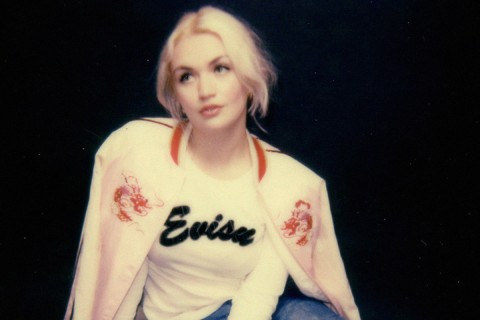
BabyFace x Evisu
Evisu is another label that’s easy to take for granted in the present day, now that their iconic seagull logo is part of the cultural fabric, but the story of its origin is actually one of the most fascinating out there. Started in 1991 by Hidehiko Yamane, initial production could only support up to 14 pairs of jeans being made, producing raw selvedge denim jeans of an exceptionally high quality.
There are several stories about the origins of the brand’s name, a popular one being that Evisu was a deliberate misnomer of Levis — even more convincing when you consider the brand’s origins in Osaka, the knock-off capital of Japan, and the similarities between Levi’s and Evisu’s rear pocket “seagull” designs. In fact, Evisu is a reference to Ebisu, a Japanese god of money, something Yamane was keen to make when he founded the brand.
During World War II, however, rationing and conservation meant Levis was not allowed to stitch the pattern into the back of their jeans, much like their hollowed-out “donut” buttons that saved metal during the war effort. As a result, the brand had to paint their branding on instead, something that Evisu references in their own painted logo.
KENZO

Eva Al Desnudo / HS
It’s difficult to miss KENZO these days. From the bright colors and vivid graphics of their collections to their recent collaboration with high street retailer H&M, KENZO is known for making a statement.
The brand was founded in Paris in 1970 by Kenzo Takada, who moved there several years previously to begin his career. Since its inception, the brand has been known for its bright, bold and unabashed collections, blending Japanese style and cultural iconography with a distinctly European fashion tradition.
It’s difficult to look at KENZO and not see the references to both Japanese tradition and contemporary culture; part ceremonial gown, part Harajuku neon-lights. In 1993, the label was acquired by LVMH, and in 2011 Carol Lim and Humberto Leon of Opening Ceremony were made the brand’s creative directors and head designers. Since taking charge, the duo have injected that same street-level savvy that made Opening Ceremony a bloggers’ favorite into KENZO, and it’s now virtually impossible to scroll through a street style photo reel and not see one of KENZO’s iconic tiger logo sweatshirts.
Issey Miyake
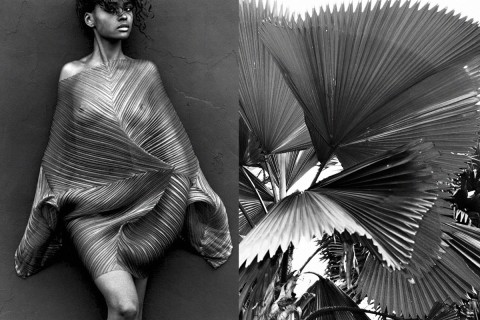
Herb Ritts
Like many of his contemporaries such as Rei Kawakubo and Yohji Yamamoto, Issey Miyake is a true revolutionary. Where Kawakubo introduced the avant-garde and Yamamoto collided tradition with progression, Issey Miyake brought the power of technology and technicality to fashion.
From pleated garments produced in such a way that they “remember” their pleats through washes to his iconic prism handbag, covered with geometric panels that fold and fluctuate like pixels in a computer game, there’s a thread that runs through all of Miyake’s creation that points to a true understanding of fashion design as design — as the creation of a functional item with purpose that should improve the quality of life of the wearer.
Perhaps it’s this mentality that made the Japanese fashion label one of Steve Jobs’ go-to brands, leading to Miyake producing dozens of black turtleneck sweaters for the Apple CEO, eventually becoming part of the legend of the man himself.
Uniqlo
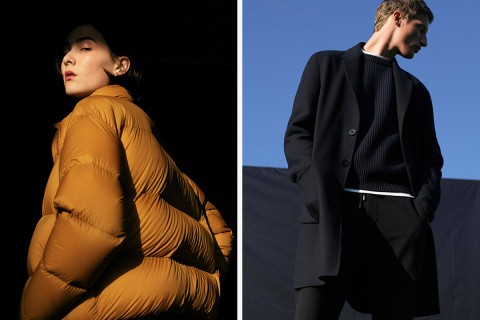
Uniqlo
In recent years, Uniqlo has made itself comfortable in the streets and shopping malls of numerous major American and European cities, so it’s easy to take the Japanese fast-fashion brand for granted, but when they first appeared in Western countries a few years ago, they really shook things up.
Established in the 1980s as the “Unique Clothing Warehouse,” an administrative error led to the brand being registered as Uni-qlo. What separates Uniqlo from other mass-market fashion brands is their approach to collections, an equal balance of straightforward, uncompromising classics and fun, wildcard designs.
On the one hand, their jackets and pants feel like the archetype: no superfluous pockets, silly zippers or whacky decorations. But then their UT T-shirt line (now under the direction of NIGO®) consistently comes through with lighthearted, everyday T-shirts with fun graphics from the likes of Keith Haring, Andy Warhol, Jean-Michel Basquiat, Disney, KAWS and many more.
Round all this off with the fact that even mainstream Japanese fashion brands have to manufacture product to a higher quality to satisfy their domestic customer, and you’ve got an affordable, everyday brand making quality staples to work into your rotation (side note: it’s also been said that their chinos, chambrays and oxford shirts are quite similar in fit to Supreme’s, so if you fancy saving yourself a few bucks… I’m just saying).
Now check out 6 Norwegian brands you need to know.

